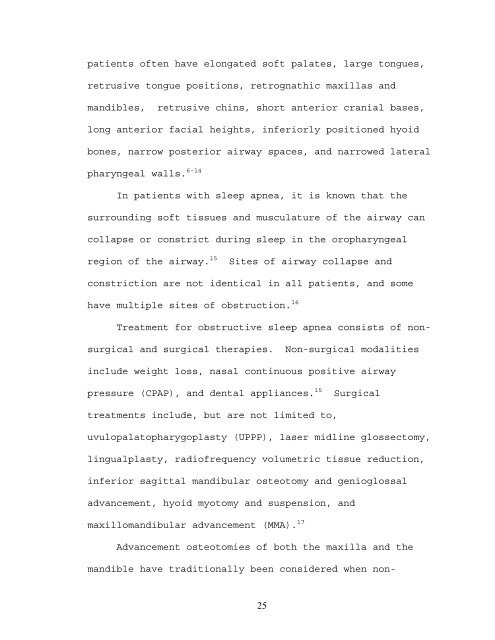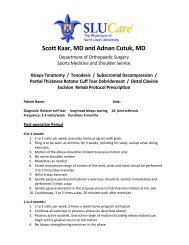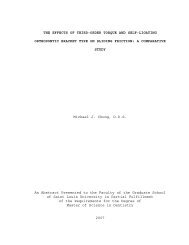PHARYNGEAL AIRWAY VOLUME FOLLOWING ...
PHARYNGEAL AIRWAY VOLUME FOLLOWING ...
PHARYNGEAL AIRWAY VOLUME FOLLOWING ...
Create successful ePaper yourself
Turn your PDF publications into a flip-book with our unique Google optimized e-Paper software.
patients often have elongated soft palates, large tongues,<br />
retrusive tongue positions, retrognathic maxillas and<br />
mandibles, retrusive chins, short anterior cranial bases,<br />
long anterior facial heights, inferiorly positioned hyoid<br />
bones, narrow posterior airway spaces, and narrowed lateral<br />
pharyngeal walls. 6-14<br />
In patients with sleep apnea, it is known that the<br />
surrounding soft tissues and musculature of the airway can<br />
collapse or constrict during sleep in the oropharyngeal<br />
region of the airway. 15 Sites of airway collapse and<br />
constriction are not identical in all patients, and some<br />
have multiple sites of obstruction. 16<br />
Treatment for obstructive sleep apnea consists of non-<br />
surgical and surgical therapies. Non-surgical modalities<br />
include weight loss, nasal continuous positive airway<br />
pressure (CPAP), and dental appliances. 15 Surgical<br />
treatments include, but are not limited to,<br />
uvulopalatopharygoplasty (UPPP), laser midline glossectomy,<br />
lingualplasty, radiofrequency volumetric tissue reduction,<br />
inferior sagittal mandibular osteotomy and genioglossal<br />
advancement, hyoid myotomy and suspension, and<br />
maxillomandibular advancement (MMA). 17<br />
Advancement osteotomies of both the maxilla and the<br />
mandible have traditionally been considered when non-<br />
25

















